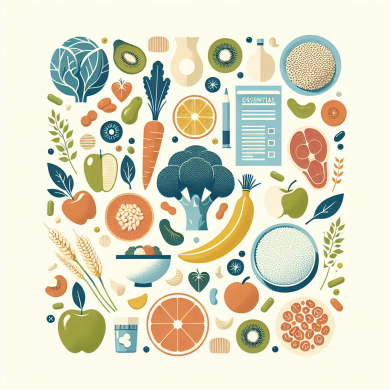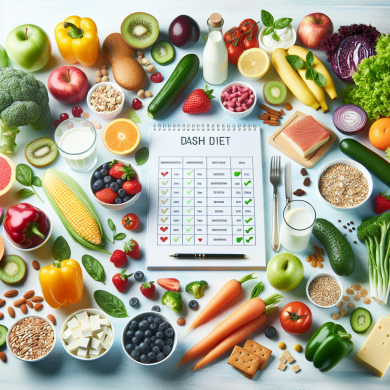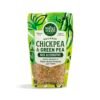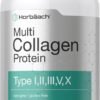### Avoid These Common Pitfalls in the DASH Diet
### Avoid These Common Pitfalls in the DASH Diet
The Dietary Approaches to Stop Hypertension (DASH) diet is renowned for its effectiveness in reducing high blood pressure and promoting overall cardiovascular health. Developed in the 1990s by the National Institutes of Health (NIH), this diet emphasizes the consumption of fruits, vegetables, whole grains, lean proteins, and low-fat dairy, while reducing salt and saturated fat intake. Although the DASH diet is a well-balanced, evidence-based approach to improving health, there are several common pitfalls that individuals may encounter when adopting it. This article aims to highlight these pitfalls and offer practical advice on how to avoid them.
## Misunderstanding Portion Sizes
One of the foundational principles of the DASH diet is portion control, yet this can be a stumbling block for many. Misjudging portion sizes can lead to consuming more calories than intended, which may hinder weight management and health goals.
### How to Avoid This Pitfall:
1. **Educate Yourself**: Familiarize yourself with standard portion sizes. Use measuring cups, spoons, and a food scale to ensure accuracy when starting the diet.
2. **Be Mindful**: Pay attention to the recommended servings and do not equate them with a serving size. For instance, one serving of meat is about 2-3 ounces, which is much smaller than what is typically served in restaurants.
3. **Visual Cues**: Use visual comparisons to help estimate portion sizes, such as a deck of cards for meat or a baseball for a cup of vegetables or grains.
## Overlooking Sodium Content
The DASH diet is specifically designed to lower sodium intake, but many people inadvertently consume more salt than recommended. Processed foods, restaurant meals, and even certain condiments can be hidden sources of sodium.
### How to Avoid This Pitfall:
1. **Read Labels**: Make it a habit to read nutrition labels to check the sodium content. Opt for products labeled “low sodium” or “no added salt.”
2. **Cook at Home**: Preparing meals at home allows you to control the amount of salt used. Utilize herbs and spices to enhance flavor instead of relying on salt.
3. **Be Wary of Condiments**: Soy sauce, ketchup, and salad dressings can be high in sodium. Use these sparingly or find low-sodium alternatives.
## Neglecting Whole Grains
While the DASH diet encourages the consumption of whole grains, many individuals may not differentiate between whole grains and refined grains. Whole grains are crucial for providing essential nutrients and fiber, which are beneficial for heart health.
### How to Avoid This Pitfall:
1. **Choose Wisely**: Select whole-grain products such as brown rice, quinoa, and whole wheat bread over refined options like white rice or white bread.
2. **Check Ingredients**: Ensure that the first ingredient on the label of bread, pasta, or cereal is a whole grain.
3. **Experiment**: Try different whole grains to find ones you enjoy. Options like farro, bulgur, and barley can add variety to your diet.
## Ignoring the Importance of Healthy Fats
The DASH diet encourages the consumption of healthy fats, but some individuals might mistakenly eliminate fats altogether, thinking this will benefit their health. However, healthy fats are essential for nutrient absorption and overall health.
### How to Avoid This Pitfall:
1. **Incorporate Healthy Fats**: Include sources of unsaturated fats like avocados, nuts, seeds, and olive oil in your diet.
2. **Limit Saturated Fats**: Reduce the intake of saturated fats from sources like fatty meats and full-fat dairy products.
3. **Balance is Key**: Remember that fats are calorie-dense, so portion control is important even with healthy fats.
## Failing to Plan Meals
Lack of meal planning can lead to last-minute food choices that may not align with the DASH diet principles. This can result in consuming meals high in sodium, saturated fats, or refined grains.
### How to Avoid This Pitfall:
1. **Weekly Planning**: Set aside time each week to plan your meals. This helps ensure that you have the necessary ingredients on hand and prevents impulsive, unhealthy food choices.
2. **Batch Cooking**: Prepare large quantities of meals that can be stored and eaten throughout the week. This is especially useful for busy days.
3. **Smart Snacking**: Stock up on healthy snacks like fruits, vegetables, and nuts to avoid reaching for unhealthy options.
## Overlooking Physical Activity
The DASH diet is most effective when combined with regular physical activity. Some individuals may focus solely on dietary changes and neglect the importance of exercise in maintaining cardiovascular health.
### How to Avoid This Pitfall:
1. **Set Realistic Goals**: Aim for at least 150 minutes of moderate-intensity aerobic exercise each week, as recommended by health guidelines.
2. **Mix It Up**: Incorporate different types of exercise such as walking, cycling, swimming, and strength training to keep it interesting and engaging.
3. **Stay Active**: Find opportunities to be active throughout the day, such as taking the stairs, walking during breaks, or engaging in active hobbies.
## Not Personalizing the Diet
The DASH diet is a flexible eating plan, but some individuals may follow it too rigidly without considering personal preferences, dietary restrictions, or cultural food practices. This can lead to dissatisfaction and difficulty in maintaining the diet long-term.
### How to Avoid This Pitfall:
1. **Adapt to Preferences**: Personalize the diet to include foods you enjoy and that fit within your cultural and dietary needs.
2. **Seek Professional Guidance**: Consult with a dietitian or nutritionist to tailor the DASH diet to your specific health needs and lifestyle.
3. **Be Flexible**: Allow for occasional indulgences and adapt the diet as needed to ensure it remains sustainable in the long run.
## Conclusion
The DASH diet is a highly effective approach to improving cardiovascular health and managing blood pressure, but like any dietary plan, it requires careful consideration and planning to avoid common pitfalls. By understanding and addressing these challenges, individuals can successfully implement the DASH diet and enjoy its numerous health benefits. A mindful approach that includes proper portion control, sodium management, whole grain and healthy fat consumption, meal planning, physical activity, and personalization will ensure that the DASH diet is both effective and sustainable.















Add comment